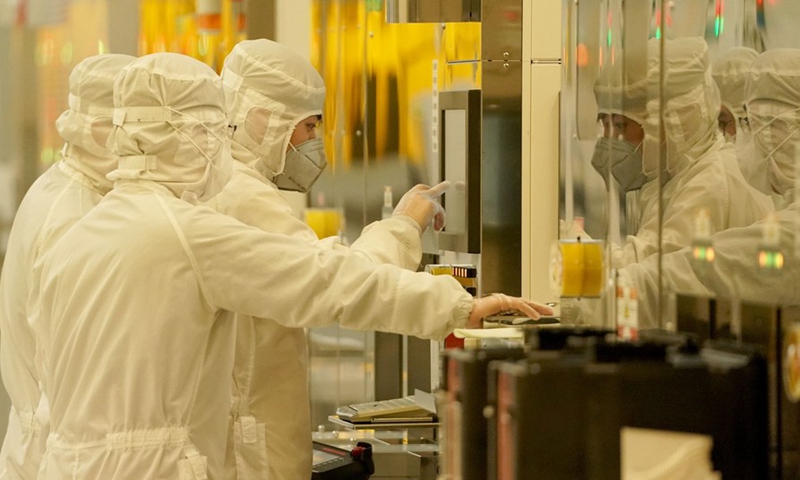China releases latest version of COVID-19 guidelines, stressing cold chain safety
Source: Global Times Published: 2020/9/16 0:08:24

Technicians work in a workshop of Wuhan Xinxin Semiconductor Manufacturing Co., Ltd (XMC) in Wuhan Donghu New Technological Development Zone in Wuhan, capital of central China's Hubei Province, Feb. 14, 2020.Photo:Xinhua
China’s Health Commission on Tuesday officially released the 7th version of the COVID-19 prevention and control guidelines, which feature revision of etiological and epidemiological characteristics, epidemic surveillance, epidemiological investigation, close contact management and response.
The latest guidelines say that the main transmission routes of COVID-19 are still respiratory droplets and close contact. However, contact or aerosol transmission can be caused by exposure to virus-contaminated objects and environments under certain conditions.
The definition of a cluster infection has been further developed, changing from "two or more cases" to "five or more cases" according to the classification standards of different regions.
The new guidelines also underscored cold chain food processing and trading to reduce the risk of spreading the epidemic in the cold chain, which caused a second wave of infection in Beijing and Tianjin.
The new regulations also increase the requirements for nucleic acid testing during isolation at designated sites for medical observation, requiring three nucleic acid tests for close contacts and one for close contacts during quarantine.
As for overseas arrivals, the new guidelines require them to undergo isolation at designated sites for seven days and have nucleic acid testing at their own expense (in the fifth day of quarantine in principle). Those who test negative can have home isolation and have a nucleic acid test voluntarily at their own expense after finishing 14-day quarantine.
The selection of designated sites must be “relatively independent and keep a certain protective distance from densely populated areas," as this is conducive to improving the overall isolation capacity of cities and avoiding the spread of the epidemic.
The new version also includes gene sequencing, requiring the tracing of the first and unidentified cases of infection and positive samples found by environmental monitoring.
Global Times
Posted in: SOCIETY